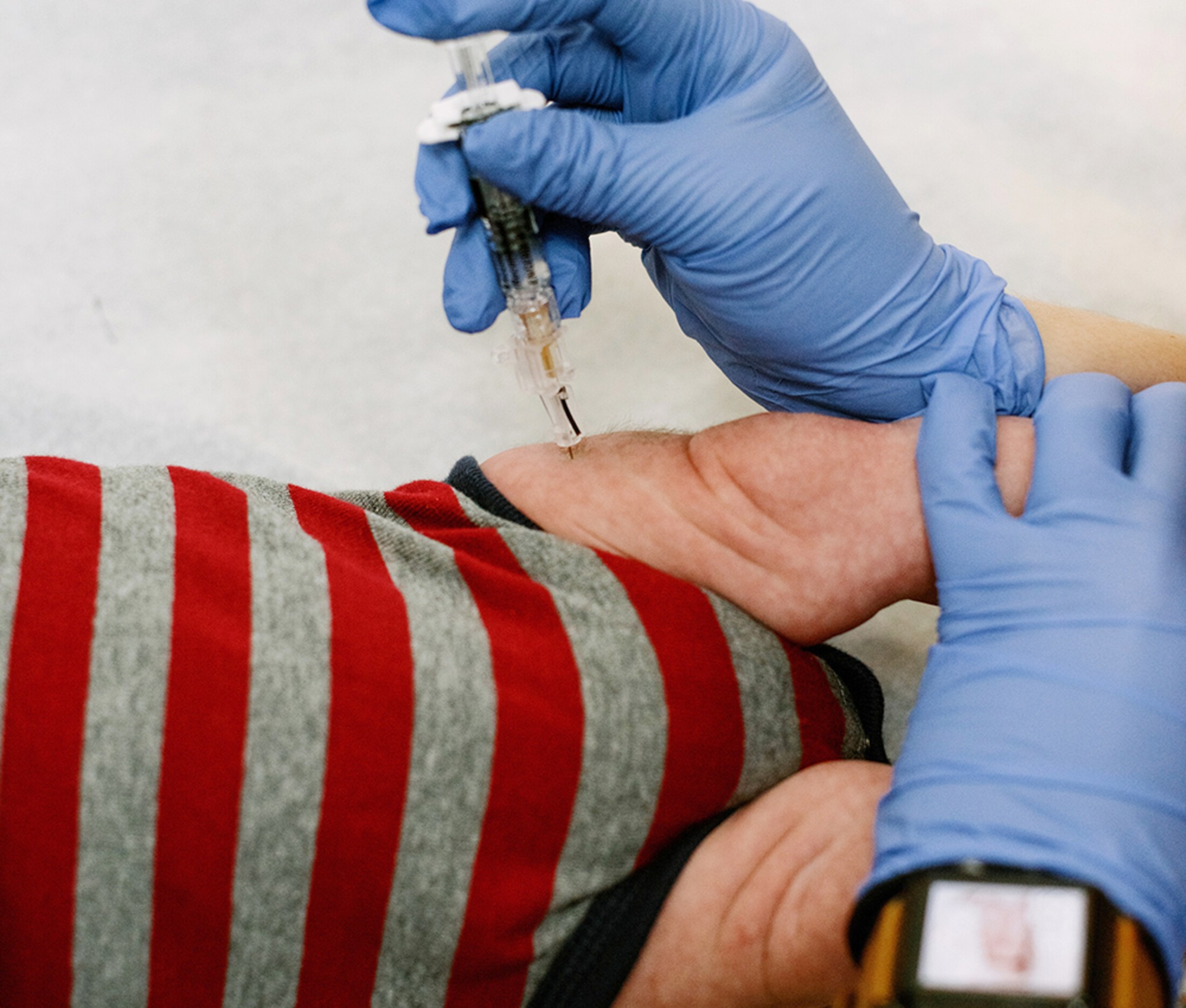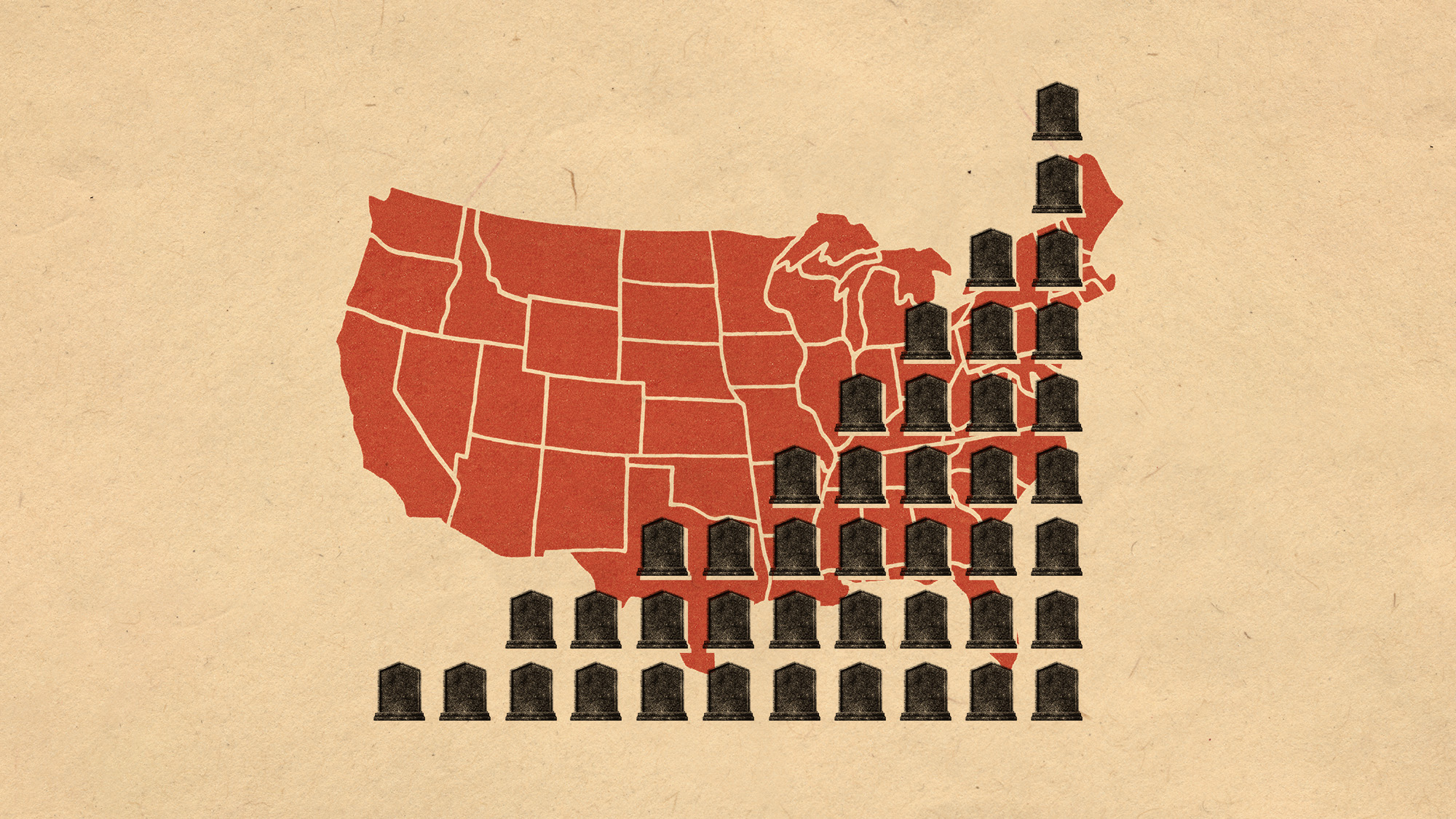What to know about norovirus
The common but highly contagious stomach bug looks to be spreading nationwide


Move over, COVID-19 — there's a new winter virus in town. Here's everything you need to know about norovirus, the highly contagious (but rarely fatal) stomach bug that's seemingly picking up steam nationwide:
What is norovirus?
Norovirus — perhaps more colloquially known by the misnomer "stomach flu" — is a common but cumbersome virus that causes intense vomiting, diarrhea, nausea, and stomach pain, per the Centers for Disease Control and Prevention. You can contract norovirus by eating contaminated food or drink ("contaminated" meaning covered in microscopic norovirus droplets shed by an infected person, or grown or harvested with water spoiled by the feces or vomit of an infected person), touching a contaminated surface then putting your fingers in your mouth, or having direct contact with someone who is infected. Given its high degree of transmissibility, it's also most common in group settings, like cruise ships, weddings, restaurants, hospitals, and long-term care facilities, Time adds.
Norovirus patients are most contagious while showing symptoms and in the first few days of their recovery, though "studies have shown that you can still spread norovirus for two weeks or more after you feel better," per the CDC. Symptoms typically appear 12 to 48 hours following exposure and last for 1 to 3 days.
The Week
Escape your echo chamber. Get the facts behind the news, plus analysis from multiple perspectives.

Sign up for The Week's Free Newsletters
From our morning news briefing to a weekly Good News Newsletter, get the best of The Week delivered directly to your inbox.
From our morning news briefing to a weekly Good News Newsletter, get the best of The Week delivered directly to your inbox.
Norovirus is not usually fatal, though vulnerable populations — like the very young and the elderly — should keep an eye out for dehydration, which can be life-threatening. Symptoms of dehydration include fatigue, dizziness, dry mouth and throat, and decreased urination, per the Mayo Clinic.
Where is norovirus spiking?
Seemingly New York City, for one. Indeed, vomiting and diarrhea-related trips to local emergency rooms have jumped significantly between December and mid-February, and "the most likely culprit is norovirus," The Gothamist reports per data from the NYC Health Department. It's hard to know for sure, though, since norovirus surveillance is generally pretty lacking.
But the illness looks to be spreading in other parts of the country, too, particularly the Midwest; As of Feb. 4, the region was experiencing a testing positivity of 19.48 percent, per the New York Post. And once a "norovirus transmission chain begins, it can be very difficult to break," Katherine Wu writes for The Atlantic. "Sometimes people vomit with such force that the virus gets aerosolized." And toilets, "especially lidless ones, can send out plumes of infection like an Air Wick from hell."
Why is it spiking?
Much like the recent rise in RSV cases, the spike in norovirus infections is likely rooted in the easing of pandemic restrictions. "Prevention measures implemented during the COVID-19 pandemic were likely effective in preventing norovirus outbreaks," the CDC's Marisa Lubeck told Nexstar, per The Hill. But as those restrictions have relaxed, "the number of norovirus outbreaks has returned to levels similar to pre-pandemic years." Norovirus is also a seasonal bug, and is generally most prevalent between the months of November and April.
A free daily email with the biggest news stories of the day – and the best features from TheWeek.com
Should I be worried?
After COVID-19, it's understandable if you're frightened to hear of another rapidly-spreading illness. But don't panic — though norovirus is, of course, "seriously gross and frustratingly hardy," it's "more a nauseating nuisance than a public-health crisis," Wu says. Further, case numbers aren't looking too wild yet, adds Vox's Keren Landman. It's definitely possible those measures continue to rise, but don't expect a repeat of March 2020 either way.
So how can I protect myself and others?
First and foremost, wash your hands. Diligently scrub with soap and water after "using the toilet or handling diapers," before administering medicine, and before eating or preparing food. Hand sanitizer does not work well against norovirus, so stick to the sink. If someone in your household is vomiting or has diarrhea, grab some rubber gloves and "thoroughly clean and disinfect the entire area immediately" using a bleach-based cleaner, the CDC notes. You might also opt for masking to add an extra layer of protection.
If you contract norovirus yourself, do not prepare food for anyone else and continue to isolate until at least two days after your symptoms stop. You should not go to work, nor should you send a recovering child to daycare or school. Drink plenty of water and electrolyte beverages to prevent dehydration, and maybe stick to toast and other bland foods.
Brigid Kennedy worked at The Week from 2021 to 2023 as a staff writer, junior editor and then story editor, with an interest in U.S. politics, the economy and the music industry.
-
 7 bars with comforting cocktails and great hospitality
7 bars with comforting cocktails and great hospitalitythe week recommends Winter is a fine time for going out and drinking up
-
 7 recipes that meet you wherever you are during winter
7 recipes that meet you wherever you are during winterthe week recommends Low-key January and decadent holiday eating are all accounted for
-
 Nine best TV shows of the year
Nine best TV shows of the yearThe Week Recommends From Adolescence to Amandaland
-
 Deaths of children under 5 have gone up for the first time this century
Deaths of children under 5 have gone up for the first time this centuryUnder the radar Poor funding is the culprit
-
 A fentanyl vaccine may be on the horizon
A fentanyl vaccine may be on the horizonUnder the radar Taking a serious jab at the opioid epidemic
-
 Health: Will Kennedy dismantle U.S. immunization policy?
Health: Will Kennedy dismantle U.S. immunization policy?Feature ‘America’s vaccine playbook is being rewritten by people who don’t believe in them’
-
 More adults are dying before the age of 65
More adults are dying before the age of 65Under the radar The phenomenon is more pronounced in Black and low-income populations
-
 Ultra-processed America
Ultra-processed AmericaFeature Highly processed foods make up most of our diet. Is that so bad?
-
 Peanut allergies have plummeted in children
Peanut allergies have plummeted in childrenUnder the radar Early introduction could be an effective prevention method
-
 Climate change is getting under our skin
Climate change is getting under our skinUnder the radar Skin conditions are worsening because of warming temperatures
-
 Is this the end of ultraprocessed foods?
Is this the end of ultraprocessed foods?Today's Big Question California law and the MAHA movement are on the same track
